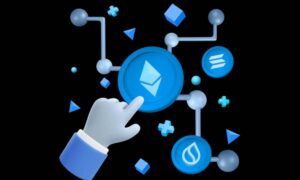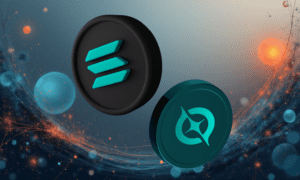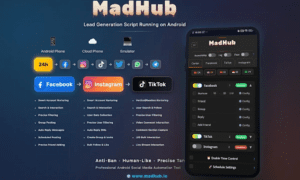In 2025, cybersecurity is an organization-wide priority, which especially includes sales teams.
Sales teams handle sensitive data every day—client contacts, contracts, pricing, and deal information. That makes them a growing target for cyber threats like phishing, deepfake messages, and unauthorized CRM access.
These threats aren’t limited to the IT department anymore. A single careless moment—like clicking a fake calendar invite or responding to a spoofed email—can lead to serious data exposure or revenue loss.
Building a high-performance sales team today means thinking beyond quotas and conversions. It requires a mindset that values security as much as speed.
In this guide, we’ll show you how to build a team that sells speedily yet securely.
Understanding the Threat Landscape in 2025
First, let’s quickly review what’s going on in the cybersecurity side of things.
AI-powered phishing is now nearly indistinguishable from real messages. Reps are getting fake emails that look like they’re from actual clients, complete with logos, deal references, and convincing copy. One click can expose your entire pipeline.
Deepfake audio is a growing concern. Voice messages impersonating executives or prospects are being used to manipulate reps into sharing sensitive information or rushing payments.
Remote work adds another layer of risk. Many reps use personal devices or unsecured networks, leaving CRMs and communication platforms vulnerable to breaches. In this case, SD-Wan solutions help create secure, reliable access to cloud-based sales tools across distributed teams by encrypting traffic and managing bandwidth intelligently, no matter where your reps are working from.
Besides, even sales automation tools like email marketing and sales force automation software can be exploited. If not properly secured, they can become entry points for attackers looking to scrape data or plant malware.
Understanding these risks is step one. The next step is building processes and habits that actively reduce them without slowing your team down.
Core Elements of a High-Performance Sales Team
A strong sales team runs on clarity, consistency, and the right tools.
Start with clear KPIs. Everyone should be aligned on what success looks like. This could include metrics like:
- Revenue closed per quarter
- Conversion rate from demo to close
- Average deal size by segment
- Pipeline coverage ratio (3x your quota is a solid benchmark)
Goals that are too vague lead to confusion and wasted effort.
Next, invest in the right tech stack. The right tools reduce friction and boost output. At a minimum, your stack should include:
- CRM: HubSpot, Salesforce, or Pipedrive
- Sales engagement: Outreach, Apollo, or Salesloft
- Data enrichment: ZoomInfo or Clearbit
- Scheduling: Calendly or Chili Piper
- Contract management: DocuSign or PandaDoc
- Secure communication: Slack Enterprise Grid or Microsoft Teams (with admin-controlled settings)
Look for tools that integrate well, reduce manual work, and offer secure access controls by default. Audit tool usage quarterly to remove redundancies and eliminate shadow IT.
Next, create repeatable sales playbooks for prospecting, discovery, objection handling, and follow-ups. Store these in a central, version-controlled workspace—like Notion or Confluence—accessible to all reps.
Use tools like Gong or Chorus to review call recordings and identify improvement areas. Run monthly performance reviews and weekly pipeline standups. For coaching, keep it short and focused—15-minute 1:1s can outperform hour-long generic reviews.
Train reps to think in terms of “secure performance.” For example:
- Never store passwords or customer data in notes or spreadsheets
- Always use company-approved devices and VPNs
- Report phishing attempts, even if caught in time
Make security part of what “top performance” looks like. That’s the foundation for adding a layer of cyber awareness that actually sticks.
Embedding Cybersecurity into Sales Culture
Security can’t be something sales teams only think about after a breach. It needs to be built into everyday habits.
When new reps join, they should learn security protocols alongside sales playbooks. Cover:
- How to spot and report phishing (show real examples)
- What tools they’re allowed to use (and which ones they’re not)
- Protocols around CRM access, password management, and mobile device use
Tools like Curricula or KnowBe4 offer short, gamified modules tailored to non-technical teams.
Treat cybersecurity like a sales skill—something that can be improved.
- Add a 5-minute “security tip” to weekly sales huddles
- Share anonymized case studies of real phishing attempts your company has faced
- Run quarterly mock-phishing campaigns and share team results
Recognize reps who report suspicious activity, avoid risky behaviors, or flag outdated permissions. A simple Slack shoutout or gift card can go a long way.
Leadership also needs to lead by example. If the VP of Sales ignores a two-factor prompt or uses personal tools, others will follow. Sales leaders must model the behavior they want to see—use secure devices, follow protocols, and speak openly about security priorities.
Choosing and Securing Your Sales Tech Stack
When evaluating tools, don’t just look at features—dig into security standards. Prioritize:
- SOC 2 Type II compliance (data handling standards)
- GDPR readiness if you’re dealing with EU clients
- Role-based access controls (RBAC) to limit what users can see and do
- Single sign-on (SSO) and Multi-factor authentication (MFA) support
Most enterprise plans offer these features. Talk to the sales or support team of every tool you consider adopting.
Every “quick Chrome extension”, integration, or free tool adds risk. Run quarterly audits to:
- Identify tools that no one owns or uses
- Remove duplicate functionality across platforms
- Deactivate accounts for former employees
- Use OAuth 2.0 integrations where possible
- Disable unused APIs
- Regularly rotate API keys
Use tools like BetterCloud or Torii to track SaaS usage and control access.
Furthermore, all prospect and client data—especially anything involving pricing, contracts, or personal info—should be encrypted in transit and at rest. Encourage reps to avoid storing data in unsecured formats like spreadsheets or plain-text notes. Use shared, encrypted workspaces (like Google Workspace with DLP, or Microsoft 365 with Purview policies).
Syncing Up Sales and Cybersecurity
You don’t need your sales reps to become cybersecurity experts. But you do need them to know who to call and what to do when things go sideways.
Here’s how to create strong alignment with your IT and security teams.
Set shared responsibilities
Sales owns the data. Security owns the guardrails. But both teams are accountable for keeping client and company info safe.
So, sales leaders should:
- Attend quarterly IT/security briefings
- Designate a sales team security point-of-contact
- Align on acceptable tools and data practices
Co-create an incident response playbook
If a rep clicks on a phishing link or a device is stolen, what happens next? Who do they contact? How should they report it? What information should they provide?
Build this process with IT and pin it somewhere obvious—Notion, Confluence, or even Slack.
Run joint simulations
Practice makes better. Do mock phishing tests and track results by team. Role-play breach scenarios during team meetings. Share debriefs so reps know what “good response” looks like.
Use platforms like Cofense, Hoxhunt, or KnowBe4 to automate this.
Create a safe feedback loop
Sometimes the best insights come from the front lines. Make it easy for reps to flag suspicious emails, access issues, or tool vulnerabilities. Encourage IT/security teams to respond quickly and respectfully.
Consider a shared Slack channel like #sales-security-support or #tool-requests to keep conversations transparent.
Speak the same language
Sales talks in revenue. Security talks in risk. Find the overlap:
- What’s the cost of downtime?
- What’s the impact of losing a prospect’s trust?
- How could a data leak impact a major deal?
Framing security in terms of sales outcomes builds stronger buy-in across both teams.
Wrapping Up
Sales leaders today wear more hats than ever. Pipeline manager. Motivator. Tech stack wrangler. And now—security champion.
As a sales head/manager/leader, you don’t need to be a cybersecurity expert. But you do need to create a team that knows how to perform at a high level without exposing the business to unnecessary risk.
This means choosing tools that are both powerful and secure, embedding cyber awareness into onboarding and coaching, collaborating with IT instead of working in silos, and tracking secure habits the same way you track revenue targets.



































